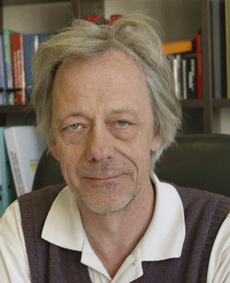Best wishes for 2016 !
![]() =>
=>![]() Dear readers, may this new year bring you health and happiness !
Dear readers, may this new year bring you health and happiness !
On a general point of view, at least in France, it is not with many regrets that we see the end of 2015, and 2016 is much welcome ! But, as far as earth observation time series are concerned, 2015 was for sure a very good year, although we expect even better from 2016.
Remote sensing history will probably remember 2015 as the year Sentinel-2 was launched, even if a steady acquisition rhythm was only reached at the end of the year. I also hope that the data acquired during the SPOT5 (Take5) experiment helped you wait for Sentinel-2 data availability. 2016 will see the real start of systematic acquisitions by Sentinel-2, the start of THEIA’s distribution of Sentinel-2 level 2A data, and the launch of the second Sentinel-2 satellite at the end of the year. At CESBIO, the end of 2015 is also the end of an era, with the end of Yann Kerr’s mandate as CESBIO’s director, who will be relpaced by Laurent Polidori. Yann created very stimulating and pleasant research conditions, which allowed to produced the results shown in this blog, and much more, such as those shown on the other blog at CESBIO. The good news is that Yann is still staying at CESBIO, at least between two travels, and we will still benefit from his overdeveloped art of making puns. At CESBIO also, the MACCS team will also miss a lot Mireille Huc, who developed and handled our atmospheric correction prototype with a very efficient combination of inventiveness, tenacity and rigour. The CNES teams will now take over, but I would like to thank Mireille for all this work, that benefited to hundreds of users of THEIA products. This blog, which opened at the very end of 2012, is now 3 years old, and this post, with its English version, will be the 300th post. We managed to post articles on a weekly basis, and, if I start lacking inspiration and time, several new bloggers are starting to take over : Simon Gascoin, Jordi Inglada, Yoann Moreau, Isabelle Soleilhavoup, Michel Lepage et Elodie Robert. We would be delighted to welcome more new bloggers, so please feel free to send us news about projects, results and discoveries. Thanks to its steady publication rhythm, the attendance is strongly increasing, as shown in the table below, which shows a 50% increase in 2015.
| 2013 | 2014 | 2015 | |
| Number of visits | 13985 | 22928 | 34723 |
| Number of read pages | 30922 | 46940 | 66947 |
The pages which have known the greatest success are provided in the table below, with of course the blog home page first, followed by the post on the eruption of the Piton de la Fournaise, in Reunion Island, monitored by SPOT5 (Take5), which really made a buzz. The post on Landsat atmospheric correction comes 3rd, and it must be well rated in the search engines, because it is a frequent entry point to the blog. The 4th page was initially a surprise, because the only information was the exact date and hour of Sentinel-2 launch, with a nice image of a champagne bottle. If fact, this image attracted most of the traffic from Google image search engine. It took me some time to understand that, and I removed the post, but it is a good incentive for humility !
| 1. | Home | 6 783(10,13 %) |
| 2. | Les dernières éruptions du Piton de la Fournaise, vues par SPOT5 (Take5) | 2 099(3,14 %) |
| 3. | USGS now delivers atmospherically corrected LANDSAT data | 2 009(3,00 %) |
| 4. | Sentinel-2A launch date Date de lancement de Sentinel-2A | 1 878(2,81 %) |
| 5. | SPOT (TAKE5) | 1 642(2,45 %) |
| 6. | SPOT5(Take5) | 1 569(2,34 %) |
| 7. | Take5 Product Format | 1 484(2,22 %) |
| 8. | LANDSAT | 1 177(1,76 %) |
| 9. | L’ortho-rectification, comment ça marche ? | 1 162(1,74 %) |
| 10. | A python module for batch downloads of LANDSAT data. | 1 156(1,73 %) |
| 11. | La production de cartes d’occupation du sol, comment ça marche? | 1 104(1,65 %) |
| 12. | Comment télécharger une série d’images LANDSAT 8 2A sur le serveur THEIA | 1 067(1,59 %) |
| 13. | Download_landsat_scene.py | 1 056(1,58 %) |
| 14. | SPOT5 (Take5) sites | 985(1,47 %) |
| 15. | In English | 952(1,42 %) |
| 16. | Landsat-download | 950(1,42 %) |
| 17. | Sentinel-2 | 949(1,42 %) |
| 18. | New satellites added to SMAC atmospheric correction | 899(1,34 %) |
| 19. | Calendrier / Calendar SPOT5 (Take5) | 884(1,32 %) |
| 20. | The cloud detection : how it works. | 854(1,28 %) |
| 21. | Olivier Hagolle | 740(1,11 %) |
| 22. | High cloud detection using the cirrus band of LANDSAT 8 or Sentinel-2 | 728(1,09 %) |
| 23. | Comment ça marche How it works | 716(1,07 %) |
| 24. | SPOT4 (Take 5) | 694(1,04 %) |
| 25. | En Français | 613(0,92 %) |









